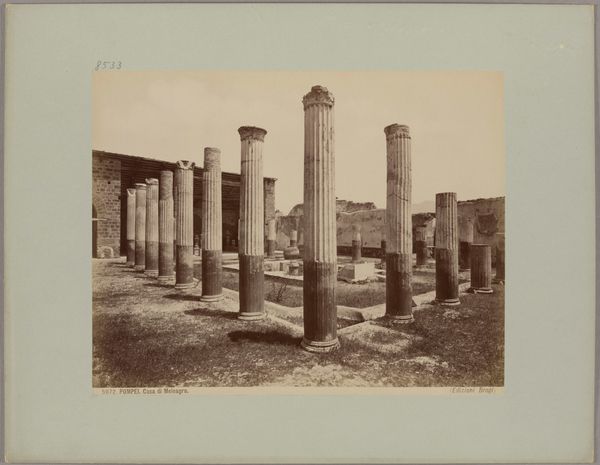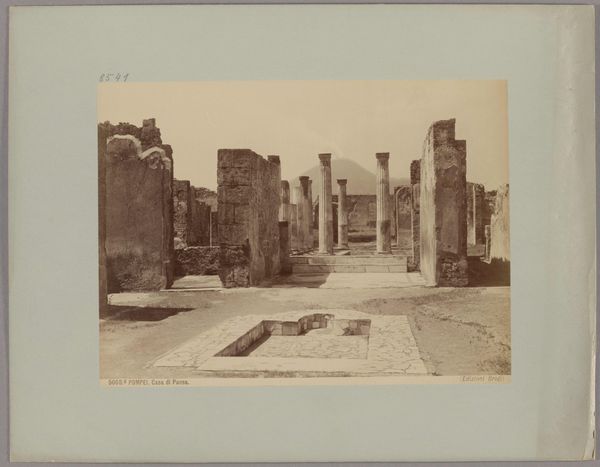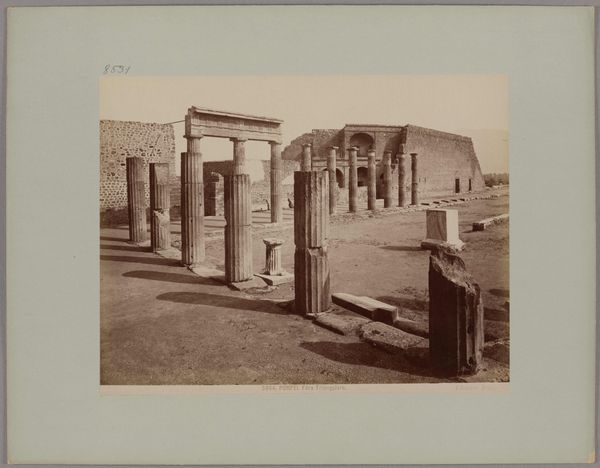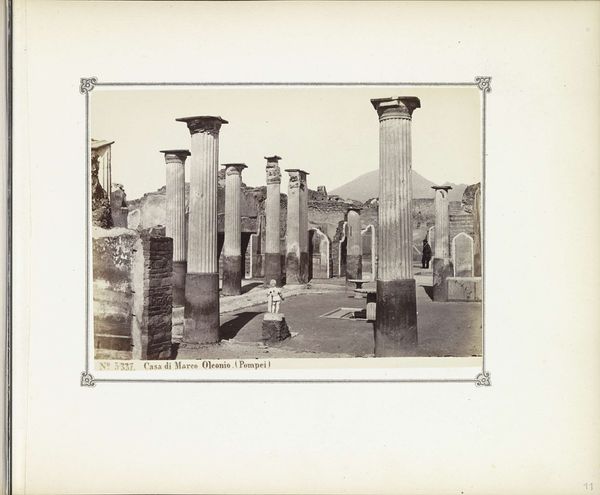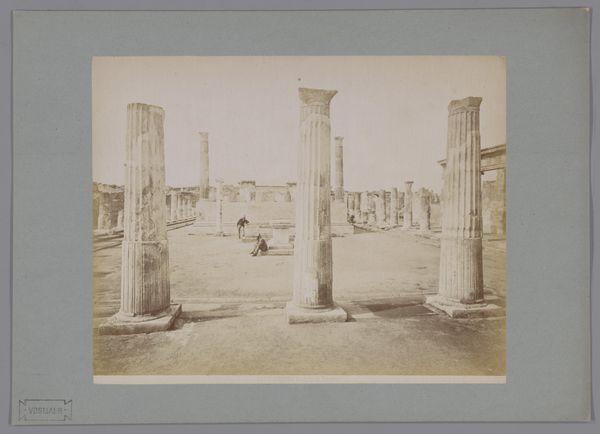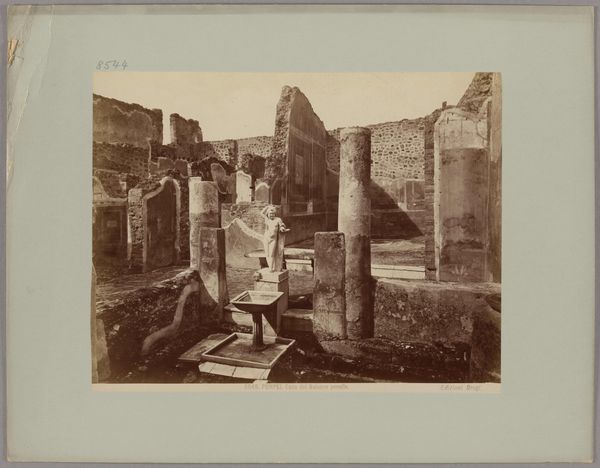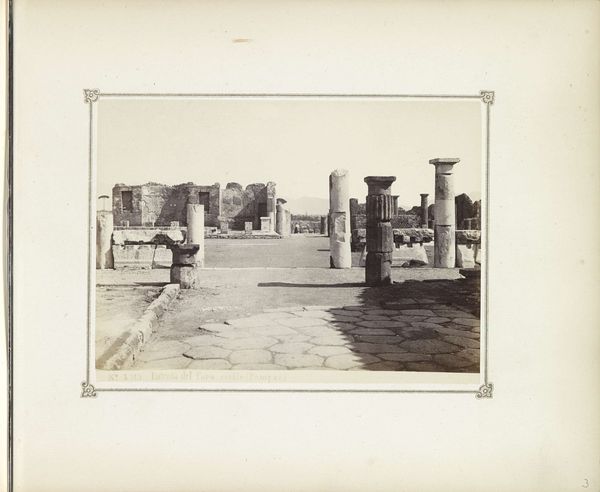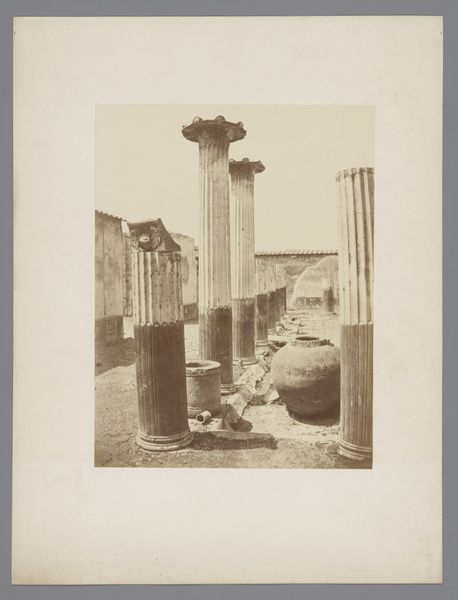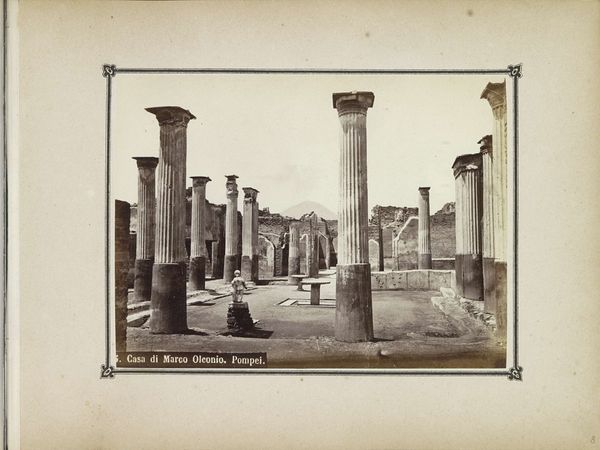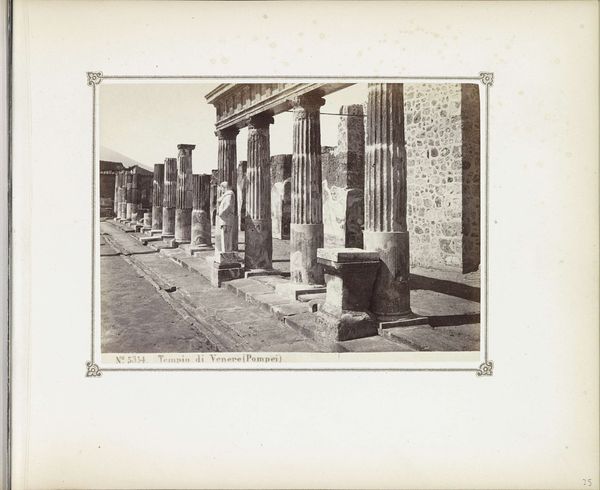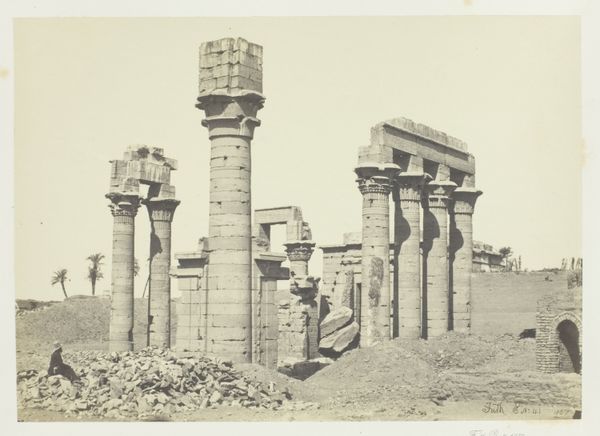
albumen-print, print, paper, photography, albumen-print, architecture
#
albumen-print
#
16_19th-century
# print
#
landscape
#
paper
#
photography
#
ancient-mediterranean
#
albumen-print
#
architecture
Copyright: Public Domain
Curator: This albumen print by Giacomo Brogi, dating from the 1870s, presents a view of the Temple of Isis in Pompeii. What are your immediate thoughts on encountering this image? Editor: It strikes me as ghostly. The muted sepia tones evoke a palpable sense of ruin, focusing on the geometry of broken columns under what must have been an unforgiving sun. There's a strange elegance in decay. Curator: Absolutely. The image speaks to the power dynamics of the time, of the archaeological gaze that extracted and continues to interpret such historical sites. It is a testament to cultural encounters and colonial ambitions, right? Editor: Perhaps, but let’s not overlook the technical skill. Consider how Brogi uses light and shadow to articulate the texture of the stone and brick. There is a complex interplay of horizontals and verticals in its compositional arrangement of architectural elements. The clarity of form remains even through centuries of ash. Curator: Though I agree, I would also consider that those same forms carry different meaning to different populations. For instance, this Temple held immense significance for freed slaves as Isis was not just a deity but also a symbol of liberation and empowerment in ancient Roman society. This element must be examined as well! Editor: I recognize the layers of context enriching such sites, but this piece stands out for the pure arrangement of forms and gradations of tone that echo the visual structure found in, say, Surrealist paintings. A stark landscape distilled to its essence. Curator: Still, I suggest we view this photograph through the theoretical lenses offered by postcolonial studies. Brogi's documentation freezes a moment steeped in exploitation—an act of both preservation and appropriation, of cultural property removed and showcased outside of the affected community's control and context. It forces the viewer to engage with this visual in different ways. Editor: I see that. For me, its powerful testament remains in the shapes, shadow play, and texture within a static, captured image. Curator: Yes. Each vantage point brings out its different meaning, highlighting how the artistic is deeply entwined with history. Editor: A synthesis of sight, sense, and site!
Comments
No comments
Be the first to comment and join the conversation on the ultimate creative platform.
